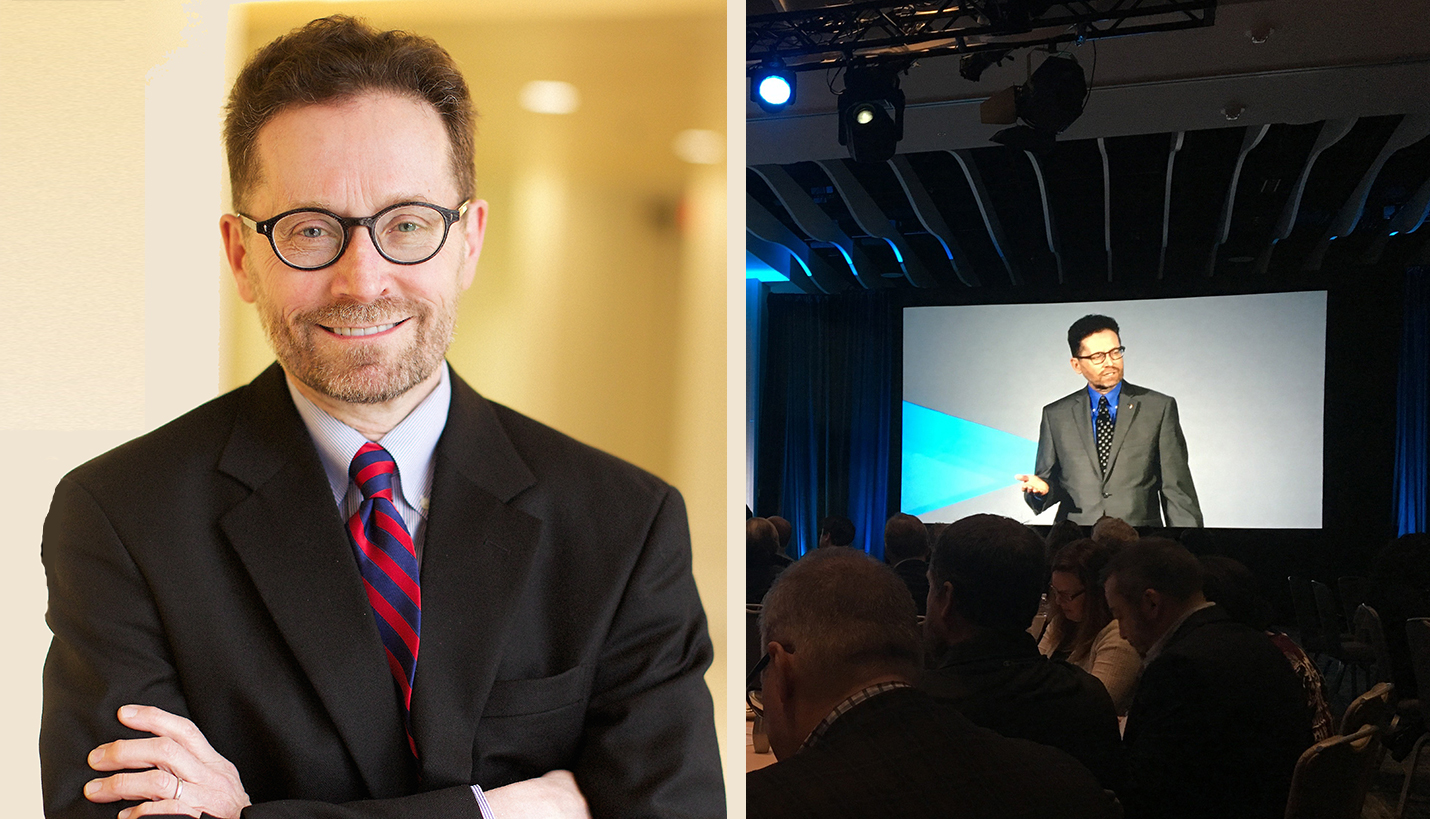

Architect Magazine: James Wright, AIA Director-at-Large Candidate Positions
Page Senior Principal James Wright was featured in Architect Magazine along with the other candidates for AIA Director-at-Large. Voting will take place at A’18, the annual national AIA convention. James shared why he is running, the role of architects and the AIA for the greater public and how the industry can respond to the biggest challenges facing the profession today.
Why do you want to lead the AIA, and how will you engage the membership?
Wright: I believe in the importance of the AIA to our profession and I am confident that I have something unique to offer in making it stronger and more effective.
I have been a senior principal-level firm owner for more than half of my career, providing me with a strong background in the business of architecture. I have acquired other leadership skills and experience through my efforts to help found the AIA International Region, serving on its first Board for its first five years of existence. In recognition of my international practice experience, I was asked to lead the AIA delegation to last fall’s International Union of Architects (UIA) World Congress & General Assembly in Seoul, and I am currently serving as the co-director of the UIA Professional Practice Commission. Leadership is also engrained in my non-professional life, most notably evident in my eight years (and counting) as lay leader of a historic Methodist congregation in Arlington, Va.
Effective engagement requires an immense amount of personal time and effort; it cannot be delegated to staff or committee. Regardless of organizational structure, I believe that the best outcomes depend on sincere listening and timely, useful communication. I work hard to find and then put myself in situations where I can listen and learn from others.
What is the role of architects and the AIA for the greater public?
Wright: Architecture is an amazing profession. Too bad society—at least American society—places a relatively modest value on it.
Underappreciated as architects may be, however, we are nonetheless at the front lines in recognizing and dealing with a myriad of challenges that impact quality of life. From the design of attractive places where people want to be, to safe and defensible buildings and their constructed community environments, to the mitigation of the enormous energy requirements of what we produce and its long term effect on climate—the work of our profession has a tremendous influence on society.
But most architecture is practiced locally and in small numbers, and as a profession we are tiny. Both New York and California have 35 percent more lawyers than there are registered architects in all of the U.S., and the number of lawyers in Texas alone is about the same as the total AIA membership. We need a strong AIA to magnify our collective national and international voice, and we need an AIA with a higher penetration rate of the nation’s roughly 110,000 registered architects. We also need to form stronger alliances with our AEC industry colleagues to give volume to our voice on those issues where we have common ground with engineers and builders.
What is the greatest challenge facing the profession today? How can firms and individual practitioners respond to it?
Wright: Internally, the biggest challenge to our profession is a complacent attitude on sexual harassment and equity-diversity-inclusivity (EDI) efforts. Default “business as usual” practices that are insensitive to positive EDI measures will increasingly result in any number of bad outcomes. Large firms with human resources professional staff and room in their overhead for outside business practice consultants are generally capable of responding directly to work culture–related challenges, but it’s not such an easy road for small and medium-sized practices.
Our work, regardless of the scale of the practice, is exceptionally demanding, and it’s difficult to focus beyond what is at hand. We need a strong AIA keeping watch on the professional rear view mirror as well as on what’s in the lane ahead of us, and then providing analysis, tools, and best practice guidelines to help architects course correct our practices. Virtual reality, augmented reality, the Internet of Things, et cetera, could be useful new tools in our tool boxes. They could also be claimed by those who would usurp some or all of what the architect does.
We are at a professional cultural crossroads at which complacency just won’t cut it.
The interview with Katharine Keane of Architect Magazine was edited and condensed.
06/12/2018
Related Posts
- Real Estate Journal: FIRMSPACE Plants Co-working Flag in Denver
- Texas Made / Texas Modern: The House and the Land
- Review: Where People And Performance Meet
- Covering Texas Architect Magazine
- World Architects Magazine on The Cistern at Buffalo Bayou Park
- Modern Luxury 2018 Best Architect: Larry Speck
- Scientific Learning Spaces Activated as Teaching Tools








